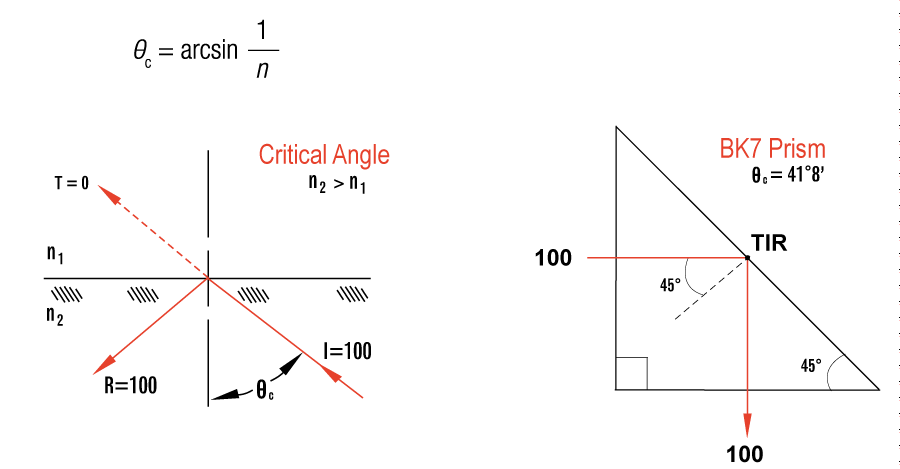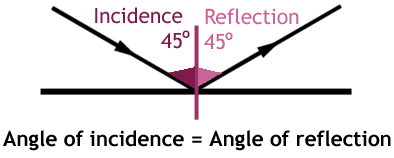
When the moon reflects from a lake, as shown in Figure 5, a combination of these effects takes place. A mirror, on the other hand, has a smooth surface (compared with the wavelength of light) and reflects light at specific angles, as illustrated in Figure 4. Many objects, such as people, clothing, leaves, and walls, have rough surfaces and can be seen from all sides. Diffused light is what allows us to see a sheet of paper from any angle, as illustrated in Figure 3. Since the light strikes different parts of the surface at different angles, it is reflected in many different directions, or diffused. We expect to see reflections from smooth surfaces, but Figure 2 illustrates how a rough surface reflects light.

The law of reflection is illustrated in Figure 1, which also shows how the angles are measured relative to the perpendicular to the surface at the point where the light ray strikes. The angles are measured relative to the perpendicular to the surface at the point where the ray strikes the surface. The law of reflection states that the angle of reflection equals the angle of incidence- θr = θi. The actual angle I need refers to angle relative to a line drawn from the player towards the top of the stage, the angles increase clockwise (so 0 deg is top, 90 deg is right, 270 is left etc). This phenomenon of total internal reflection has many practical applications in optics.Figure 1. All I need is to find the angle to shoot at so that it reflects to the player (i.e. Another characteristic of internal reflection is that there is always an angle of incidence q c above which all light is reflected back into the medium. This polarization by reflection is exploited in numerous optical devices. The reflected light is then linearly polarized in a plane perpendicular to the incident plane. Note that the reflected amplitude for the light polarized parallel to the incident plane is zero for a specific angle called the Brewster angle. These curves are the graphical representation of the Fresnel equations.

Internal reflection implies that the reflection is from an interface to a medium of lesser index of refraction, as from water to air. The illustration shows typical reflection curves for internal reflection. Typical reflection and transmission curves for external reflection.

Perpendicular case: Reflected % and transmitted %.

Parallel case: Reflected % and transmitted %. Which applies to both the parallel and perpendicular cases. For further details, see Jenkins and White.Ĭhecking out conservation of energy in this situation leads to the relationship When you take the intensity times the area for both the reflected and refracted beams, the total energy flux must equal that in the incident beam. (For example, try light incident from a medium of n 1=1.5 upon a medium of n 2=1.0 with an angle of incidence of 30°.) But the square of the transmission coefficient gives the transmitted energy flux per unit area (intensity), and the area of the transmitted beam is smaller in the refracted beam than in the incident beam if the index of refraction is less than that of the incident medium. You can choose values of parameters which will give transmission coefficients greater than 1, and that would appear to violate conservation of energy. The signs of the coefficients depend on the original choices of field directions. Note that these coefficients are fractional amplitudes, and must be squared to get fractional intensities for reflection and transmission. For a dielectric medium where Snell's Law can be used to relate the incident and transmitted angles, Fresnel's Equations can be stated in terms of the angles of incidence and transmission.įresnel's equations give the reflection coefficients: That is, they give the reflection and transmission coefficients for waves parallel and perpendicular to the plane of incidence. Fresnell's Equations: Reflection and Transmission Fresnel's Equationsįresnel's equations describe the reflection and transmission of electromagnetic waves at an interface.


 0 kommentar(er)
0 kommentar(er)
